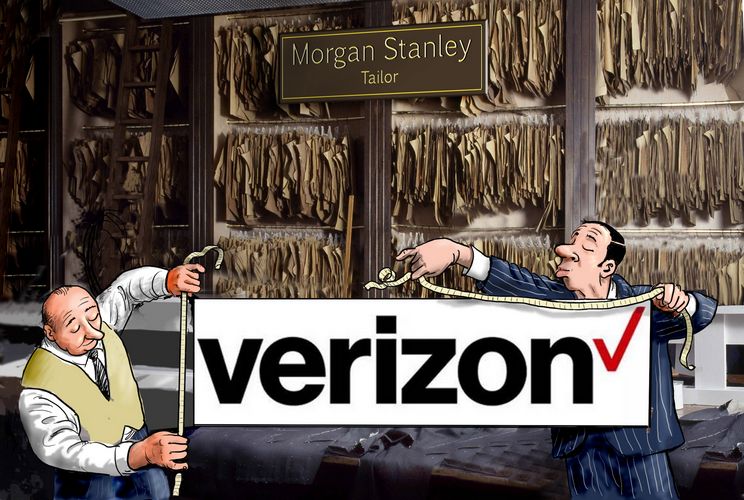Tailor-made
In a year when it felt like the US high-grade corporate market couldn’t get any hotter and every bond issue flew off the shelf, one bank stood out by customising solutions for issuers that appealed to investors too. Morgan Stanley is IFR’s North America Investment-Grade Corporate Bond House of the Year.
In 2017, it has seemed like nothing could rock the corporate credit party. Despite a volatile year when earthquakes and hurricanes caused massive devastation, the nuclear threat from North Korea, and a dysfunctional administration in Washington, it almost seemed at times that the higher the risks, the tighter the spreads in the US investment-grade market.
Of course, there were plenty of drivers that helped the bull run. The lack of foreign inflation, coupled with moderate US inflation, spurred massive demand for US high-grade credit products – in large part from foreign inflows – pushing spreads to their tightest levels since the financial crisis. And that was despite corporate issuers jamming as much supply through the pipeline as possible.
Against this backdrop, it’s been hard for bankers selling high-grade bonds in 2017 to differentiate themselves on execution. But Morgan Stanley managed to do just that, providing bespoke solutions and encouraging issuers with whom it had strong and trusted relationships to be more creative.
Two deals were emblematic of Morgan Stanley’s tailor-made approach: telecoms giant Verizon’s US$3bn of 16-year bonds in August, and a US$1bn preferred stock issue from GM Financial in September. Both were firsts for the market.
Earlier this year, Morgan Stanley bankers had been hearing from investors of the need for an off-the-run bond issue in the 16-year part of the curve. The clamour was particularly strong from insurance companies and pension money, for which the duration would match their liabilities well.
The maturity would be the first of its kind in the market. The next question was, who could Morgan Stanley find to issue the bonds?
That’s where Verizon came in: probably the poster child for a cookie-cutter frequent issuer in high-grade, and a company with which Morgan Stanley has a strong relationship. The telecoms company has the second-largest corporate debt stack in the world – second only to AT&T.
But despite Verizon’s heavy maturity stack, it turned out that the issuer had a blank space in 2033 – just the right spot for a 16-year bond. The company grabbed the opportunity, said Paul Spivack, head of IG syndicate.
“The bumper sticker on this deal isn’t so much the 16-year, but the bespoke off-the-run maturity solutions,” Spivack said. “This issuer needed the 16-year, and investors wanted it. We found the perfect match.”
On August 1, Verizon priced US$3bn of 16-year fixed-rate notes at 4.50% – or Treasuries plus 165bp, representing minimal new issue concessions. Announced with US$1.5bn of reverse enquiry, the order book peaked at US$5.25bn. Morgan Stanley was sole structuring agent and lead-left bookrunner on the deal.
General Motors Financial is also a prolific issuer, with a substantial debt stack. And after spending the vast majority of 2017 in the press, the automaker wanted a capital structure that would optimise its situation for both bondholders and shareholders.
The problem was that bondholders wanted General Motors to focus on remaining investment-grade and bolstering the capital story. But shareholders were focused on the return of capital.
Morgan Stanley’s answer was to create the first post-crisis preferred stock offering from an auto captive finance company.
It wasn’t a natural fit, said Scott Ashby, US FIG DCM head. But while it would have been easy to dividend money down from parent company GM to bolster the capital structure, Morgan Stanley’s bespoke solution was more efficient from a cost of capital perspective.
“We advised the company to put this capital security in place at the subsidiary to give them more equity flexibility – but also give them a credit buffer in a world where sub-prime losses on the auto side have been ticking up,” Ashby said.
GM Financial priced US$1bn of US$1,000 par perpetual non-call 10-year fixed-to-floating-rate cumulative preferred stock at 5.750% on September 13. The peak order book was US$4.5bn, allowing the company to price the deal about 37.5bp tighter than initial talk in the low 6% area.
Morgan Stanley advised GM on the structure and rating agency discussions, coordinated the investor marketing and acted as joint bookrunner, billing and delivery agent on the offering.
For Morgan Stanley, it was the perfect cross-asset assignment, Ashby said.
To see the digital version of this review, please click here.
To purchase printed copies or a PDF of this review, please email gloria.balbastro@tr.com.



